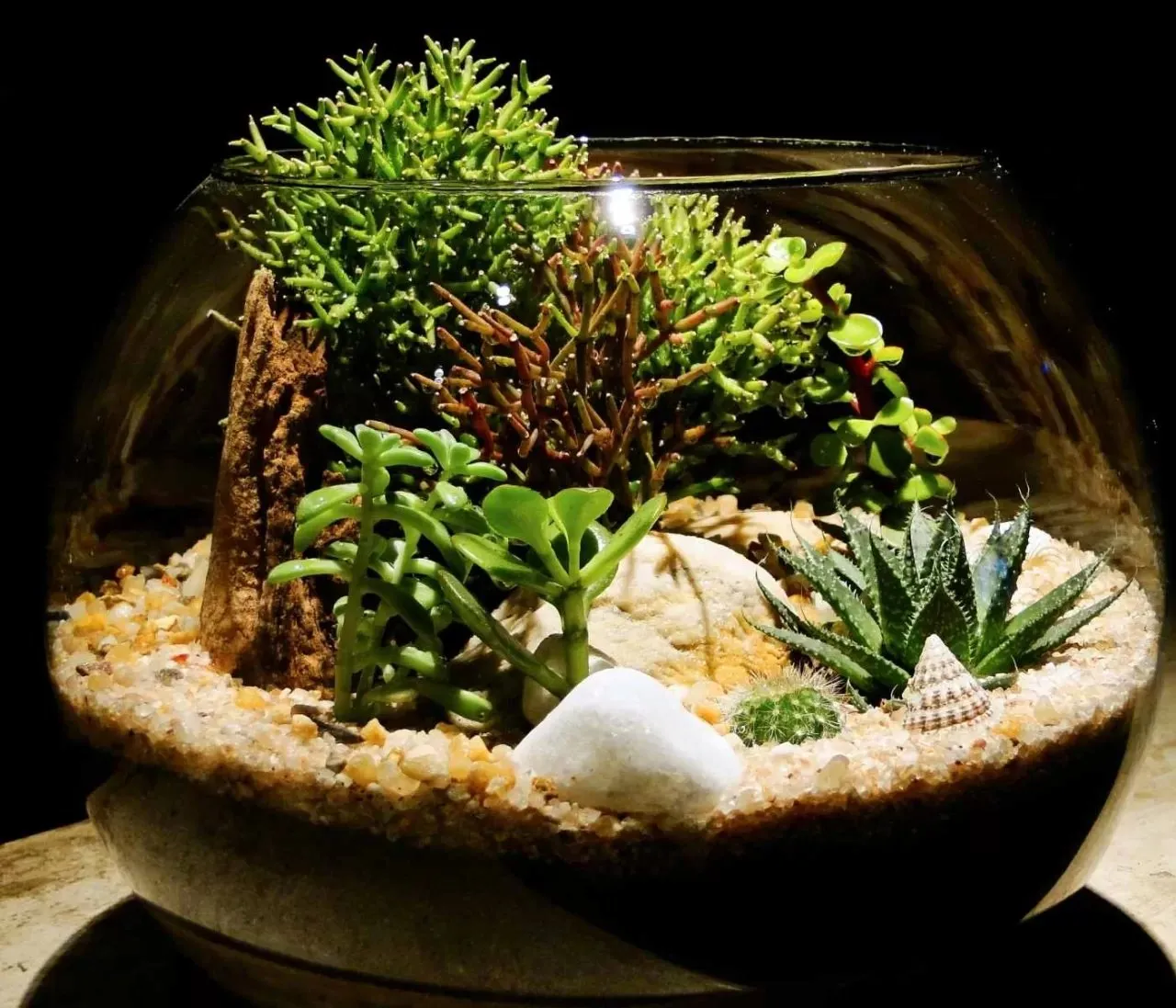Choosing the Best 10 Gallon Tarantula Enclosure
Selecting the right enclosure is crucial for the health and happiness of your tarantula. A 10-gallon enclosure is often a great starting point for many terrestrial tarantula species, providing ample space for them to move around, burrow, and feel secure. The ideal enclosure balances size, functionality, and ease of maintenance. Consider factors like the type of tarantula you have, its adult size, and its specific needs. Understanding these elements will help you create an environment where your tarantula can thrive. This guide will help you choose the best 10-gallon tarantula enclosure to create a comfortable home for your eight-legged friend. Always prioritize your tarantula’s well-being when making decisions about its enclosure.
Size and Dimensions for a 10 Gallon Enclosure
The standard dimensions of a 10-gallon aquarium are generally suitable for juvenile and smaller adult tarantulas. The typical measurements are approximately 20 inches in length, 10 inches in width, and 12 inches in height. These dimensions offer enough horizontal space for terrestrial species to roam, and sufficient height to add substrate for burrowing. While a 10-gallon tank provides a decent starting point, always consider the adult size of your tarantula. Larger species might eventually need an upgrade to a bigger enclosure. The correct size ensures your tarantula feels secure and can exhibit natural behaviors without feeling cramped. Moreover, the dimensions allow for proper temperature gradients and humidity control, vital for the tarantula’s health. Remember to account for substrate depth and decor when assessing the usable space within the enclosure.
Why 10 Gallons is a Great Size
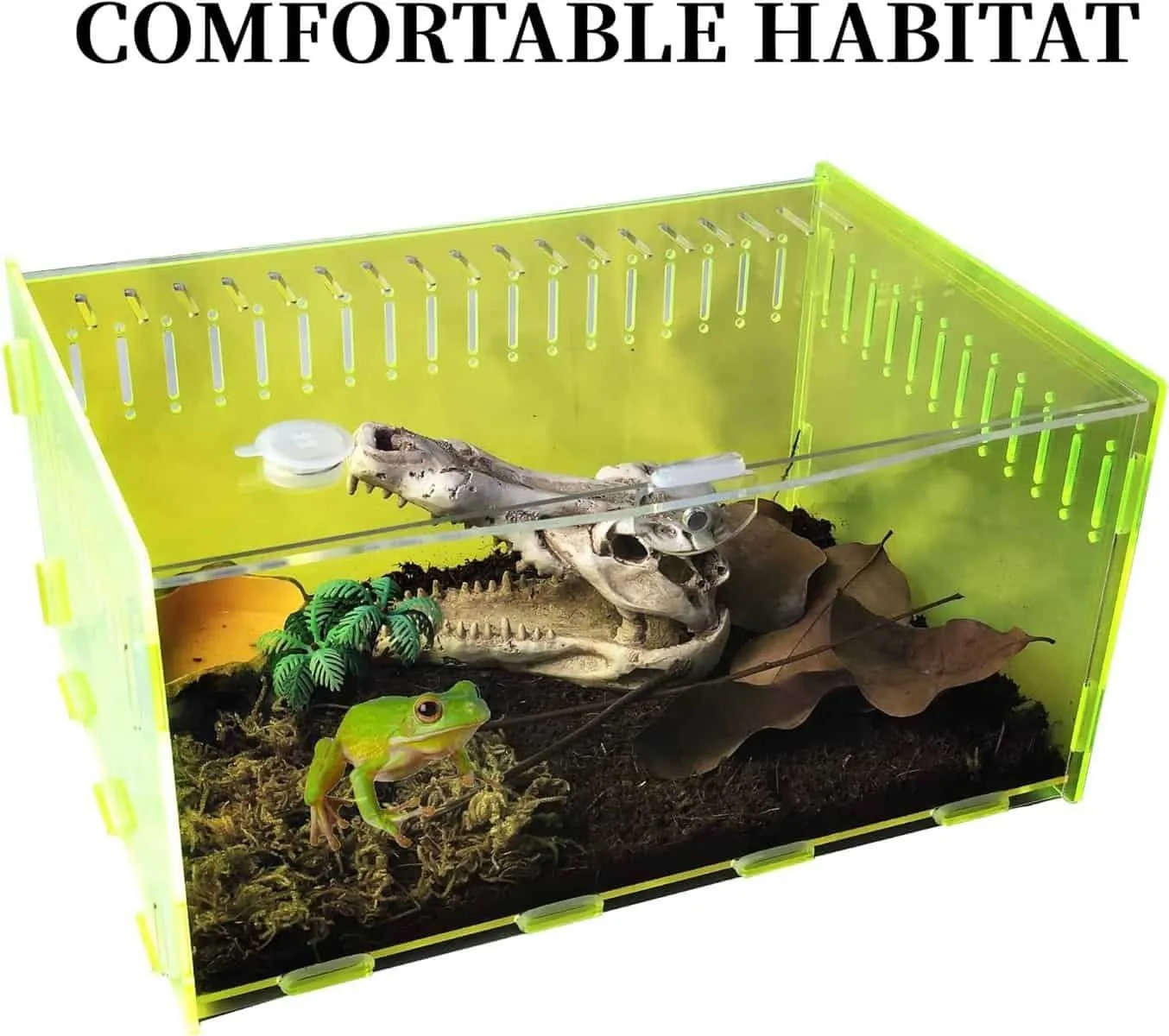
A 10-gallon enclosure strikes a beneficial balance for tarantula keeping, providing several advantages over smaller or larger options. It’s generally cost-effective and easy to find. The size is manageable for both the tarantula keeper and the tarantula itself, allowing for relatively straightforward maintenance and care. Compared to smaller enclosures, a 10-gallon tank offers better temperature and humidity stability, which are critical for tarantulas. The increased space also allows for more elaborate decoration, enrichment, and substrate depth, which supports the tarantula’s natural burrowing behavior. This size is particularly suitable for many beginner tarantula species, providing a safe and comfortable environment to thrive in. Also, the setup of a 10-gallon enclosure is an excellent introduction to the complexities of arachnid care.
Essential Features for a Tarantula Enclosure
To ensure the well-being of your tarantula, several essential features must be considered when setting up a 10-gallon enclosure. These features affect your pet’s health, behavior, and overall quality of life. Ventilation is necessary for air circulation and preventing the buildup of harmful gases and mold. The substrate should be appropriate for your tarantula’s species, providing a suitable environment for burrowing and maintaining humidity. Proper humidity control is vital, achieved through a combination of substrate, ventilation, and water availability. Heating and lighting also play a key role, regulating the enclosure’s temperature and promoting the tarantula’s natural behavior. Considering these crucial elements will create a safe and stimulating habitat for your tarantula, contributing to its overall welfare. Each aspect of the enclosure contributes to a healthy and happy arachnid.
Ventilation
Proper ventilation is an often-overlooked but essential component of a tarantula enclosure. Adequate airflow is necessary to prevent the buildup of stale air, mold, and harmful bacteria, all of which can harm your tarantula. A 10-gallon enclosure needs ventilation, which can be achieved through a screen top or strategically placed ventilation holes. The goal is to allow for air circulation without compromising the humidity levels needed for the tarantula’s species. The design should prevent escape while also preventing stagnation. Avoid enclosures that are completely sealed, as this can lead to respiratory problems and a buildup of harmful gases. Regularly inspect the ventilation to ensure it remains clear and unobstructed, guaranteeing a healthy living environment for your tarantula. The right ventilation supports a balanced and thriving ecosystem within the enclosure.
Substrate
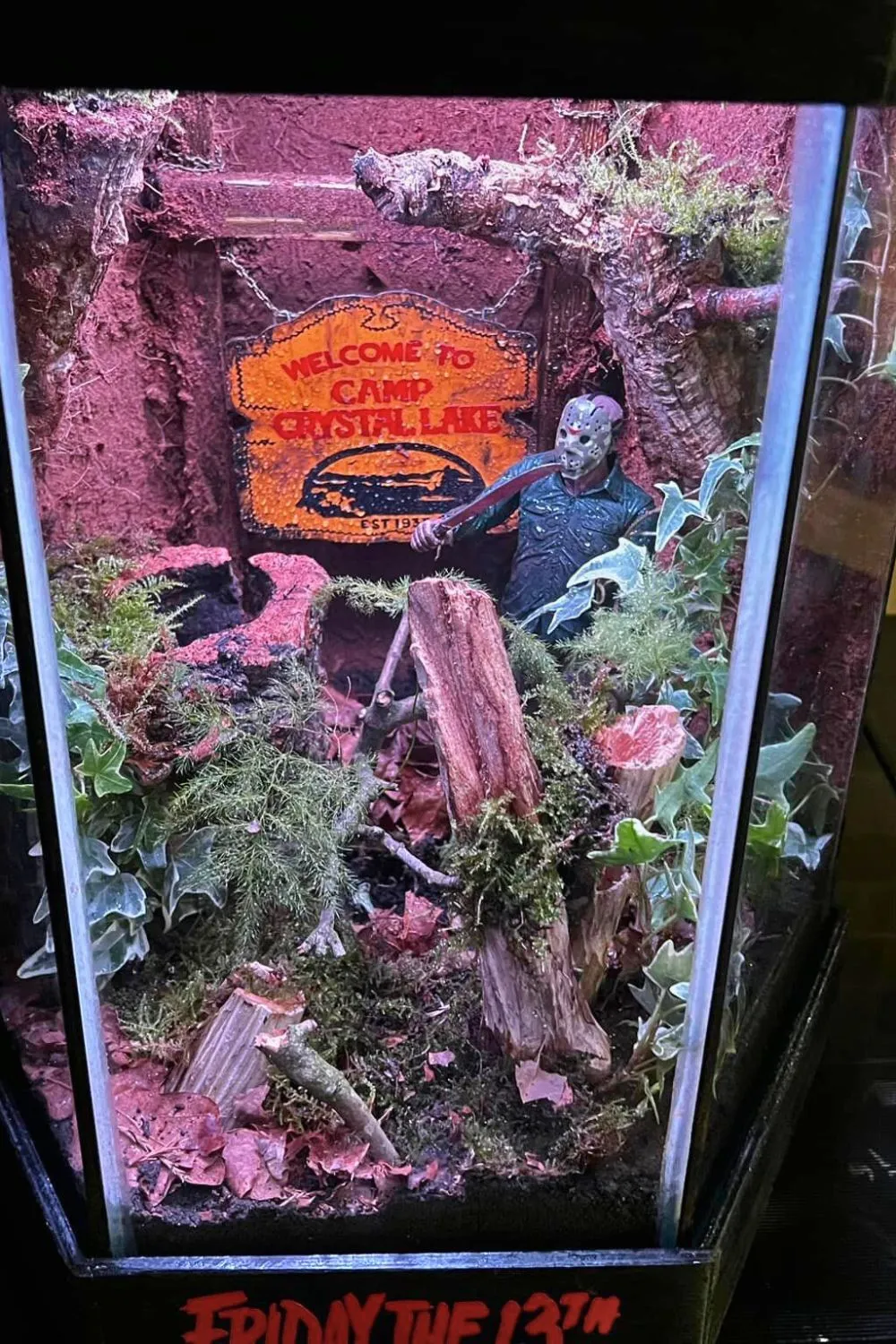
The substrate is the bottom layer of the enclosure, providing a surface for your tarantula to walk on, burrow in, and maintain humidity. For a 10-gallon tank, choose a substrate appropriate for your tarantula species. Good options include a mix of peat moss, coconut fiber (coir), and a small amount of vermiculite. These materials retain moisture well, aiding in humidity control. The depth of the substrate is important; terrestrial tarantulas benefit from a deeper layer to allow them to burrow and feel secure. Avoid substrates that are dusty or can harbor mites. Change the substrate regularly to keep the enclosure clean and healthy. Also, make sure the substrate is free of pesticides. A well-chosen substrate supports the tarantula’s health and encourages its natural behaviors.
Humidity Control
Humidity is a critical environmental factor that affects your tarantula’s health and well-being. Different species have different humidity requirements, so research your specific tarantula’s needs. To control humidity in a 10-gallon enclosure, you can use the substrate, provide a water dish, and adjust the ventilation. Mist the enclosure with dechlorinated water to raise humidity levels, but avoid oversaturating the tank. Monitor humidity using a hygrometer. Proper humidity aids in the tarantula’s molting process and helps prevent dehydration. Make sure you can maintain the right humidity levels to ensure your tarantula can thrive in a healthy and balanced environment. Regular monitoring and adjustment are key to maintaining proper humidity in your pet’s habitat. Consistent care can make all the difference.
Heating and Lighting
Most tarantulas do not require specialized lighting, as they are nocturnal. However, a gentle heat source may be necessary to maintain the correct temperature gradient within the enclosure. A low-wattage heat mat placed on the side of the tank (never underneath, as this can overheat the substrate and harm the tarantula) is often sufficient. Monitor the temperature with a thermometer, ensuring a range that suits your species. Avoid direct sunlight, which can overheat the enclosure. Maintain a consistent temperature range, as dramatic fluctuations can stress your tarantula. Correct heating provides the ideal environment for your pet, stimulating its activity and promoting a healthy appetite. Ensure the heat source is always safe and appropriate for your species.
Decorating Your 10 Gallon Tarantula Enclosure
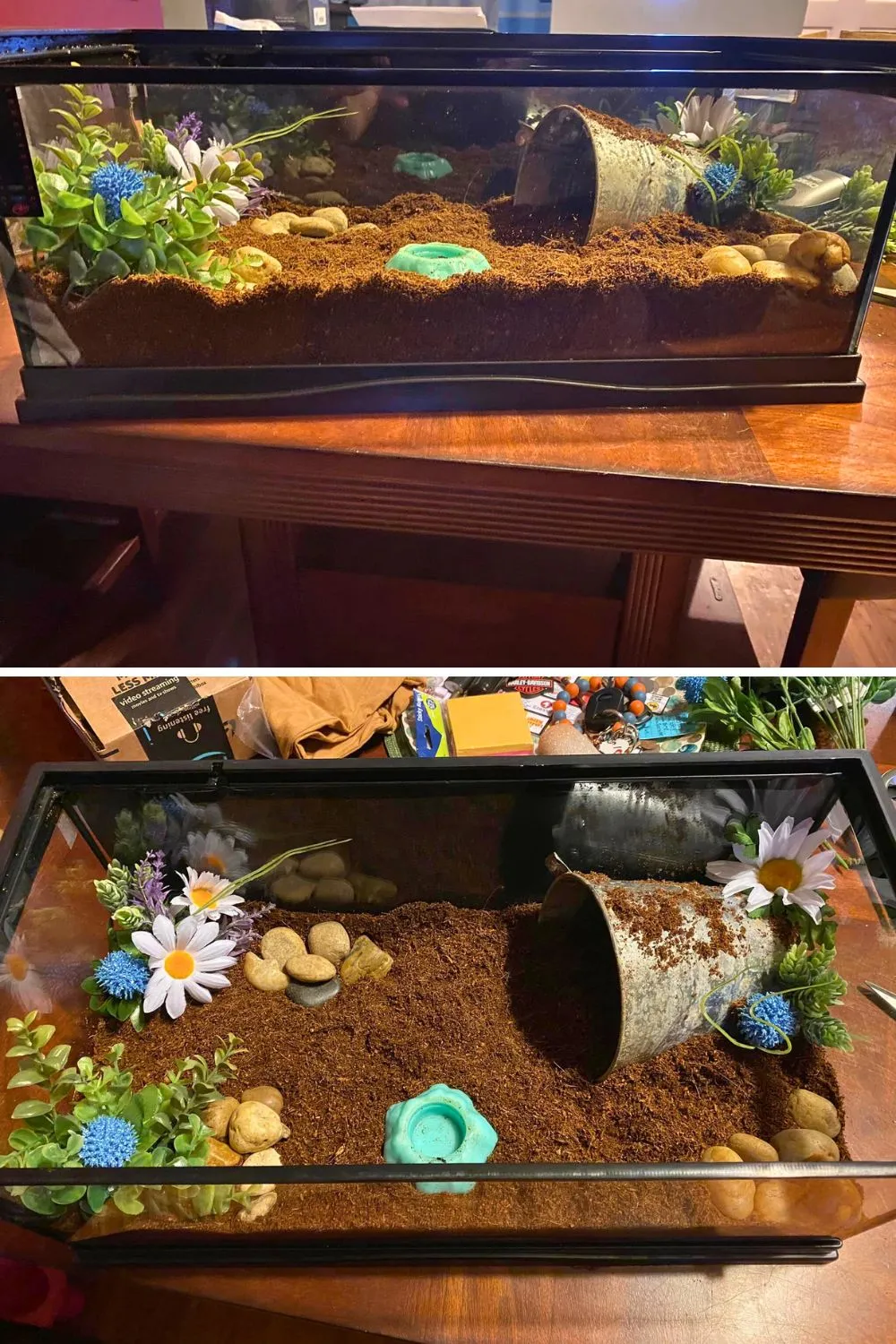
Decorating your tarantula’s 10-gallon enclosure enhances its habitat, offering enrichment and a more natural environment. Include items like cork bark, artificial plants, and sturdy hides to provide shelter and a sense of security. Avoid sharp objects that could injure your tarantula. Arrange the decor to create various microclimates within the enclosure. You can add elements that allow your tarantula to climb or hide. These enrichments encourage natural behaviors such as burrowing, climbing, and hiding. Adding appropriate decor not only improves the enclosure’s aesthetics but also greatly enhances the tarantula’s quality of life. Remember that safety is paramount, so make sure everything you put in the enclosure is non-toxic and stable. Choose decorations that make your tarantula feel safe and secure.
Hides and Shelters
Providing adequate hides and shelters is crucial for your tarantula’s well-being. These offer security, allowing the tarantula to retreat and feel safe. Suitable options include cork bark, half logs, or commercially available hides designed for reptiles and arachnids. Place the hide in a location where the tarantula can easily access it. The hide should be appropriately sized so the tarantula feels snug but not cramped. A hide provides a retreat for molting, resting, and escaping from stressors. Ensure the hide is stable and won’t tip over, potentially injuring the tarantula. The availability of a good hide reduces stress and enhances the tarantula’s sense of security within the enclosure. Adding hides will contribute to a happier and healthier tarantula.
Water Dish
A shallow water dish is an essential element for a tarantula enclosure. It provides a source of fresh, clean water for your tarantula to drink. Choose a dish that is shallow enough to prevent drowning, and be sure the tarantula can easily access it. Place the water dish in a stable location within the enclosure, away from the heat source to prevent rapid evaporation. Regular cleaning of the water dish is vital to prevent bacterial growth and contamination. You can use a sponge to remove any debris. Fresh water is crucial for the tarantula’s hydration, especially during molting. Proper water provision will keep your tarantula healthy and thriving. Remember, even terrestrial species still need a consistent source of water.
Live Plants vs. Artificial
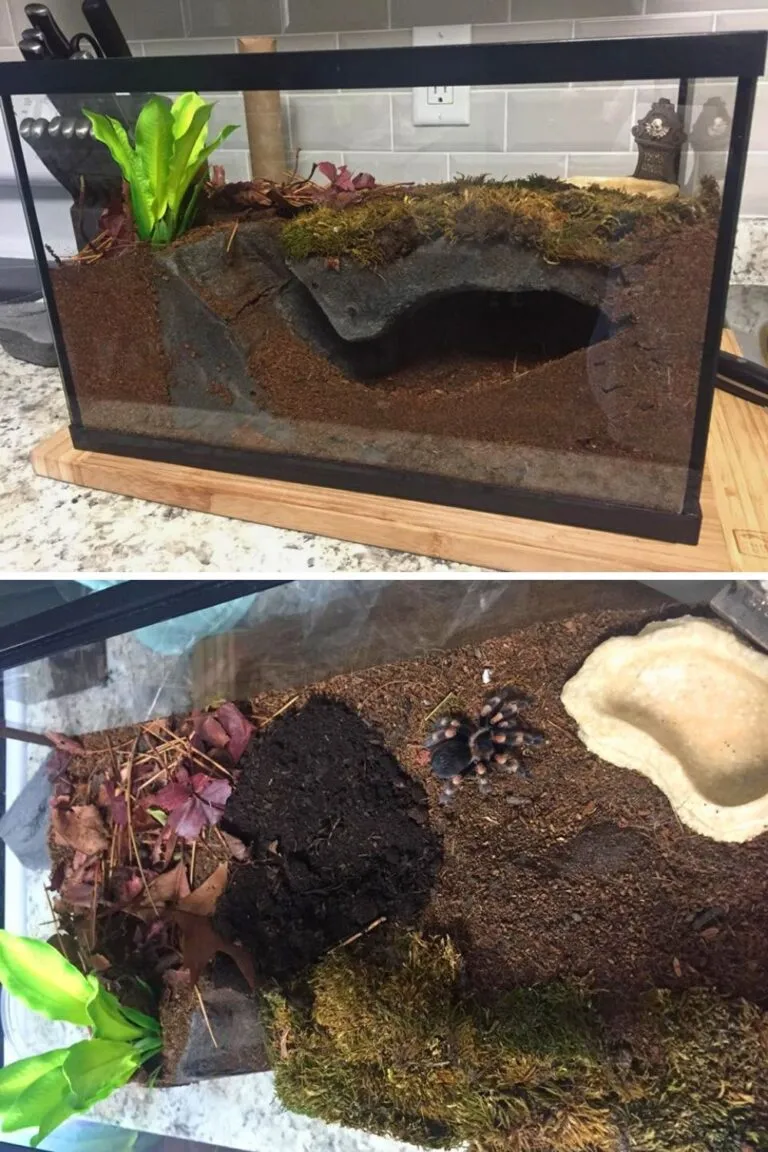
The choice between live and artificial plants in your 10-gallon tarantula enclosure depends on your maintenance preferences and the environment you want to create. Live plants can contribute to humidity control, provide a more natural aesthetic, and offer enrichment for your tarantula. However, they require proper lighting, appropriate species selection, and careful monitoring to prevent mold or the introduction of pests. Artificial plants are easier to maintain, requiring no special care. They can be cleaned easily and provide a consistent aesthetic. When choosing, ensure the artificial plants are non-toxic and won’t harm your tarantula. Consider the benefits and drawbacks of both options. A combination of both might be a good choice. The primary goal should be to choose the option that best suits your tarantula’s needs while considering your care capabilities.
Tarantula Enclosure Maintenance
Regular maintenance is essential for a healthy and thriving tarantula. This includes cleaning the enclosure, monitoring environmental conditions, and providing food and water. A consistent maintenance routine will prevent health issues and ensure your tarantula lives a long, happy life. The specific requirements depend on the species and the setup. Proper maintenance reduces risks and supports a healthy and stimulating environment. Dedication to maintenance is an important aspect of responsible tarantula keeping. Establishing a good routine now will make it easier for you to maintain in the future.
Cleaning Your Enclosure
Regular cleaning is key to maintaining a healthy environment for your tarantula. This involves removing uneaten food, fecal matter, and old molts. Spot clean the enclosure weekly, removing any visible waste. Perform a full substrate change every few months, depending on the species and setup. When cleaning, remove the tarantula to a safe holding container and thoroughly clean the enclosure with warm water and a mild, unscented soap, ensuring you rinse thoroughly. Avoid the use of harsh chemicals, as they can harm your tarantula. Proper cleaning prevents bacterial growth and keeps your tarantula’s home fresh. Consistent cleaning contributes significantly to the overall health and well-being of your pet.
Monitoring Humidity and Temperature
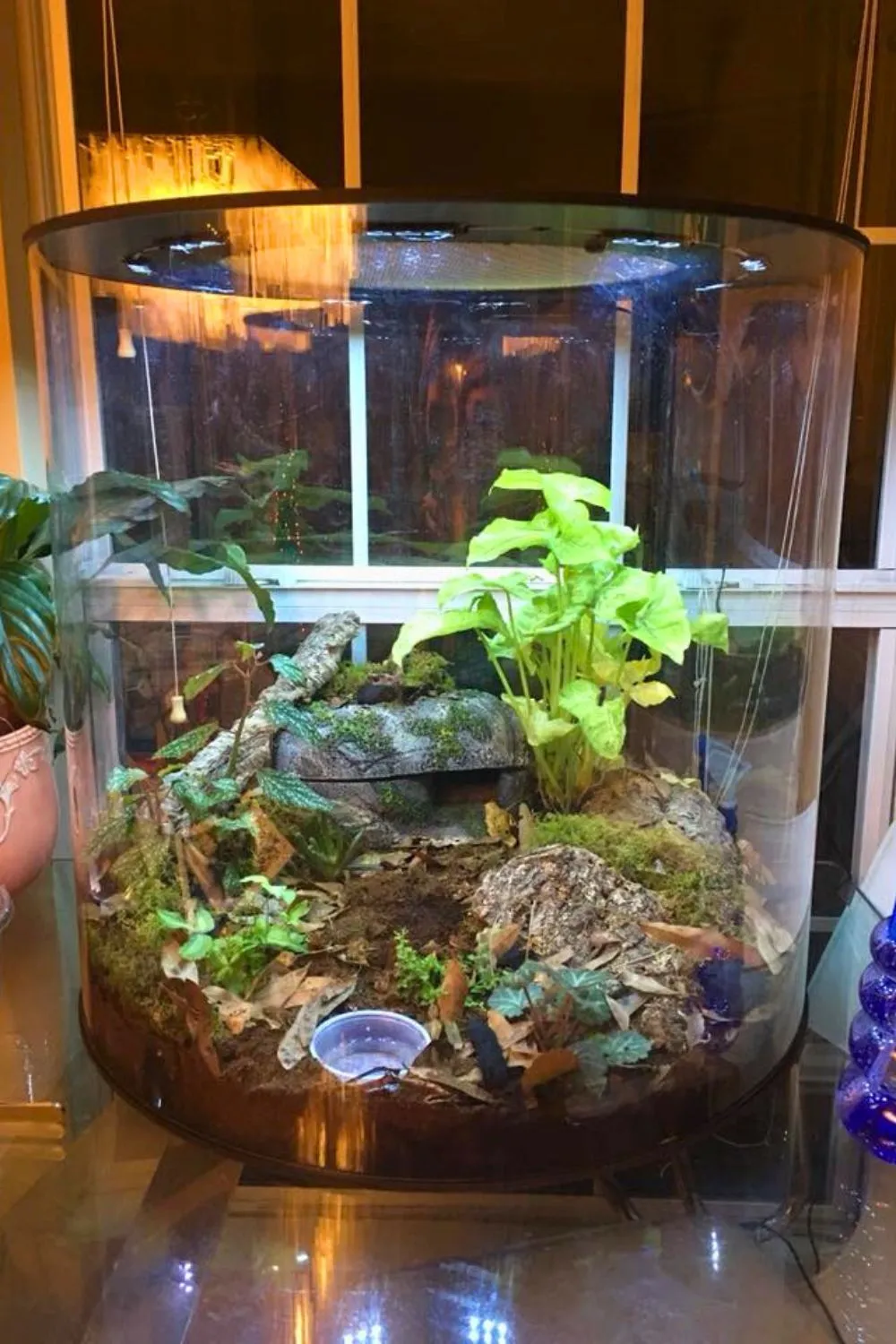
Consistent monitoring of humidity and temperature is essential for your tarantula’s health. Use a hygrometer to measure humidity and a thermometer to monitor the enclosure’s temperature. Adjust these parameters based on your tarantula’s species requirements. Make adjustments to the ventilation, heat source, or misting schedule as needed to maintain the ideal environment. Keeping a log of the environmental conditions can help you identify any trends or issues. Stable and appropriate conditions support the tarantula’s health, molting, and appetite. Regular monitoring and adjustments will help prevent potential health problems. Pay close attention to these parameters.
Feeding and Watering
Feeding and watering are vital components of tarantula care. Offer appropriately sized insects, such as crickets or dubia roaches, based on your tarantula’s size and feeding schedule. Remove any uneaten food within 24 hours to prevent mold or mite infestations. Provide a clean water dish with fresh water at all times. Adjust the feeding frequency based on the tarantula’s age and species. Overfeeding can lead to health issues. Observe your tarantula’s behavior to determine if it is eating properly. A well-fed and hydrated tarantula is more likely to be healthy and active. Always ensure that food is safe and clean. You want to ensure your tarantula has an adequate supply of both water and food.
Common Mistakes to Avoid in a 10 Gallon Enclosure
Several common mistakes can undermine the health of your tarantula. Avoid overcrowding, as this can lead to stress and aggression. Don’t use sharp or toxic decorations, which can harm your tarantula. Ensure the enclosure is escape-proof. Avoid direct sunlight, as this can overheat the enclosure. Don’t handle your tarantula unless necessary, as this can cause stress. Ensure that you research your specific species’ needs. Don’t use pesticides near the enclosure. Correcting these common mistakes will help you create a safe and healthy environment for your tarantula. Being mindful of potential pitfalls can enhance the well-being of your tarantula. Education is key to ensuring your tarantula has a happy and long life.
By carefully considering the features and maintenance requirements of a 10-gallon enclosure, you can provide a safe, enriching, and comfortable home for your tarantula. Remember that each species has its own unique needs, so research is key. A well-prepared enclosure will ensure your tarantula thrives. Enjoy the journey of tarantula keeping.
